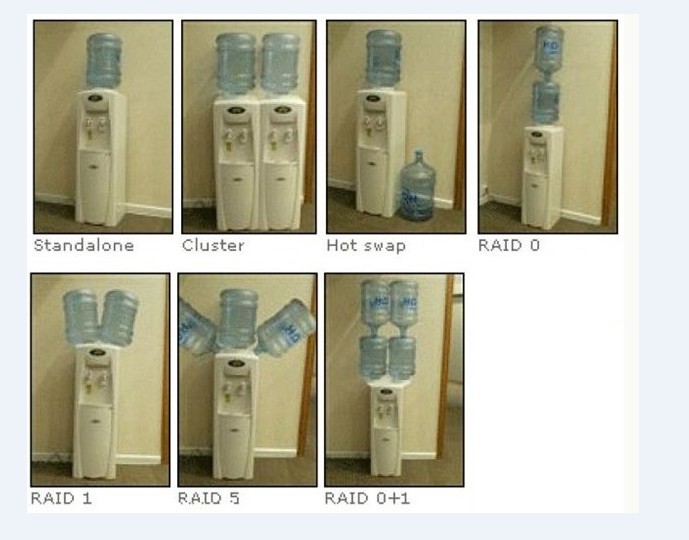Through the last article "Why do servers need to be disk arrays?" "Detailed introduction, I believe everyone has a basic understanding of RAID Redundant Disk Array. When you set up a server, you found that there are many types of raid when you choose the configuration. Among them, the common ones are RAID0, RAID0+1, RAID1, and RAID5. So what is the difference between the four of them?
Through the following image, the difference between them is vividly shown!

Standalone
The most common single disk storage method.
Cluster
Cluster storage is a storage method that distributes data to each node in the cluster, providing a single interface and interface, so that users can conveniently use and manage all data in a unified manner.
Hot swap
Users can remove and replace hard disks without shutting down the system and without cutting off the power supply, which improves the system's resilience, scalability and flexibility.
Raid0
Raid0 is the array format with the strongest storage performance among all raids. Its working principle is to disperse and access continuous data on multiple disks, so that when data needs to be accessed, multiple disks can be executed side by side, and each disk executes its own part of the data request, which significantly improves the overall disk access performance. But it does not have fault tolerance and is suitable for low-cost, low-reliability desktop systems.
Raid1
It is also called mirror disk, which mirrors the data of one disk to another disk, uses mirroring fault tolerance to improve reliability, and has the highest data redundancy capability in raid. When storing data, the data will be written into the mirror disk at the same time, and the data will be read only from the working disk. When a failure occurs, the system will read data from the mirror disk and then restore the correct data on the working disk. This array method is extremely reliable, but its capacity will be reduced by half. It is widely used in applications with extremely strict data requirements, such as commercial finance, file management and other fields. Only one hard drive is allowed to fail.
Raid0+1
Combine Raid0 and Raid1 technology together, taking into account the advantages of both. While the data is guaranteed, it can also provide strong storage performance. However, at least 4 or more hard disks are required, and only one disk fails. It is a triple high array technology with high cost, high reliability and high storage performance.
Raid5
Raid5 can be regarded as a low-cost solution of Raid0+1. It adopts cyclic even check independent access array mode. The data and the corresponding parity information are distributed and stored on the various disks that make up the RAID5. When one of the disk data is damaged, use the remaining disk and the corresponding parity information to recover/generate the lost data without affecting the availability of the data. At least 3 or more hard drives are required. Suitable for operations with large amounts of data. An array method with slightly higher cost, new strong storage, and strong reliability.
